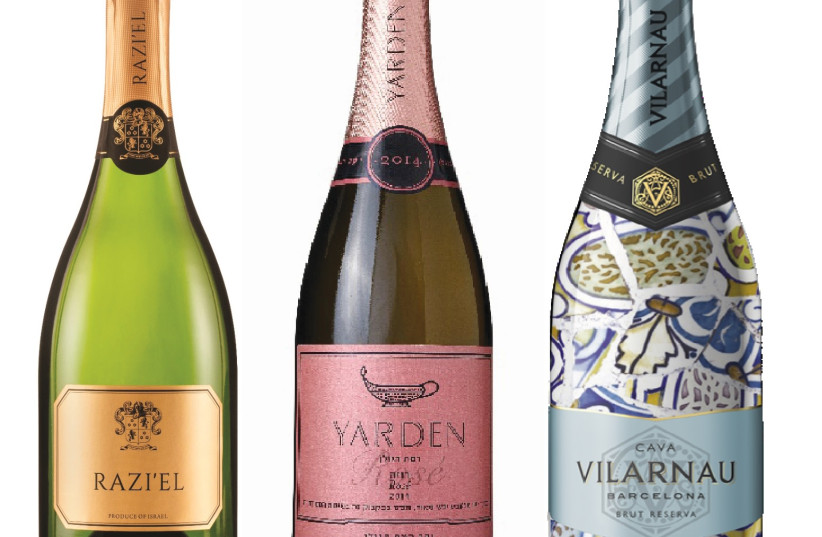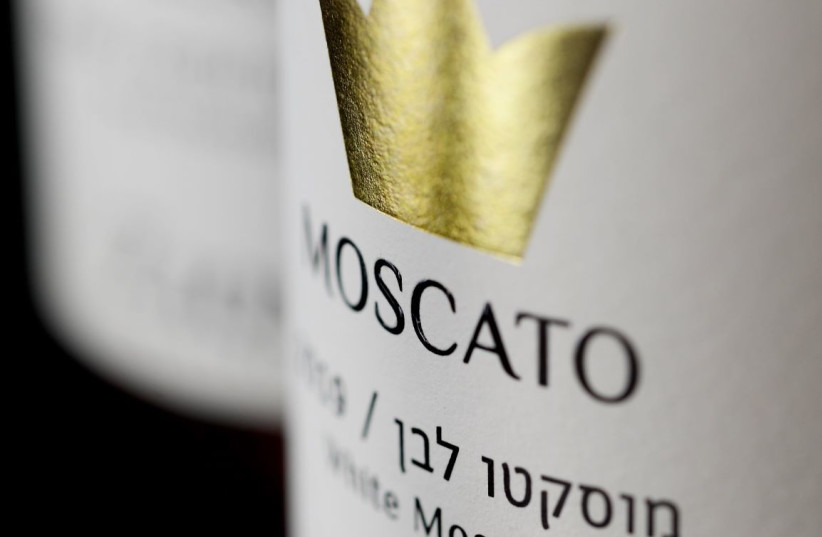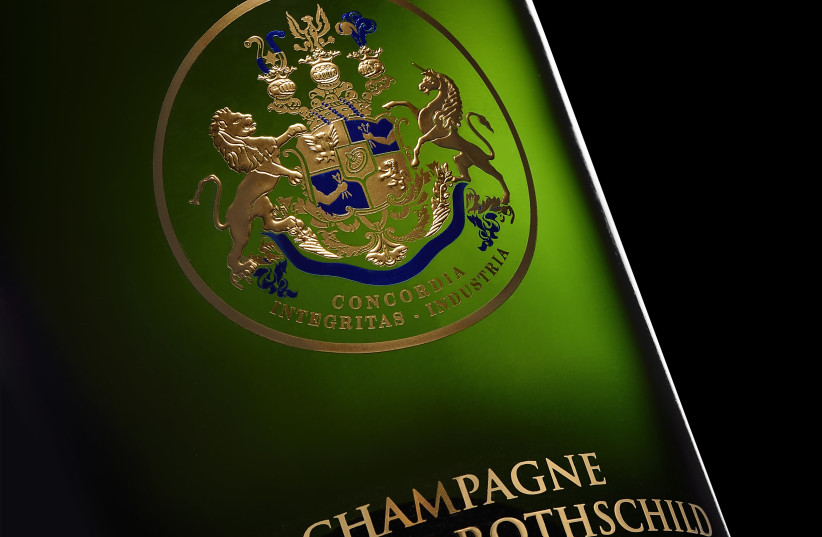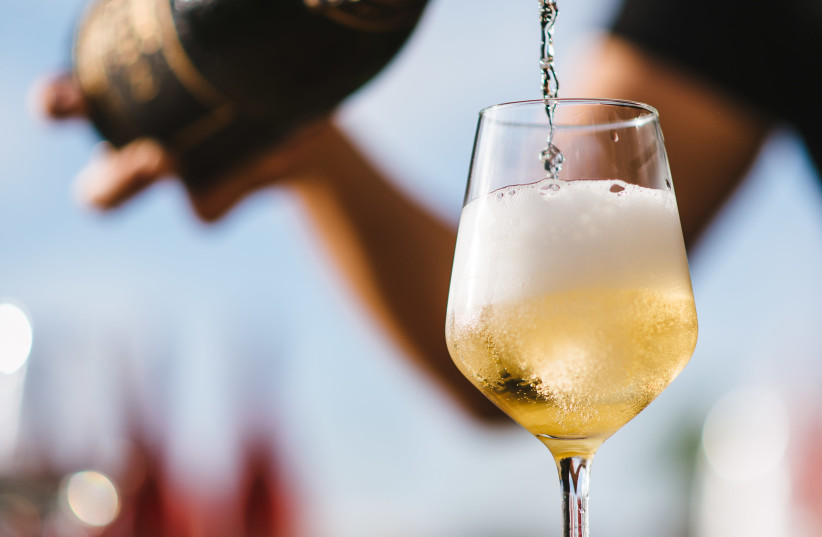Sylvester’s or New Year’s Eve is a time for celebration – and the classic wine for that is sparkling.
However, this covers a wide range, from the cheapest-flavored wine with bubbles, which will cost NIS 20-something, to a prestige Champagne like Dom Perignon, which may set you back NIS 1,500.
Everything in between is suitable, so you can buy what you like at a price you can afford, without trying to impress anyone. Whatever you choose is acceptable.
THE MOST basic sparkler, more dessert wine than sparkling wine, is the simple but crowd-pleasing Moscato. Made from the Muscat grape variety, it is perfect for breakfast or brunch and is sweet and low alcohol; while only lightly sparkling, it will do. Furthermore, everyone will like it. It is grapey, full-flavored and frothy.
You can choose the Moscato from different stages of Israel’s wine history. The Zion Winery Red Moscato 2021 and White Moscato 2021 (both NIS 27) are from Israel’s oldest existing winery. The Buzz Moscato 2021 (NIS 30) and Private Collection Moscato 2021 (NIS 40) are both from Carmel, the first commercial winery in Israel, which basically heralded the founding of a modern Israel wine industry. The Private Collection looks better, copying the blue bottle of Bartenura and Blue Nun, but I could not find a smidgen of difference in Carmel’s different Moscatos. So my recommendation is to buy on price and go for the Buzz.

If you want to go to the source, the Bartenura Moscato 2020 (NIS 60) is authentic Italian, from Asti, home of this genre. Just because it is a ginormous brand does not mean it is not excellent.

The new craze in Israel is for Pet-Nats (Petillant-Naturel), the most natural and ancient way of making a sparkling wine. Simply, the CO2 from the fermentation is captured in the bottle without additions, and the wine is enjoyed as is, warts and all.
Pet-Nats are known as hipster’s Champagne or beer drinker’s sparkling wine. These are mood wines made as a response to the natural and minimum intervention movement. The wines tend to be fruity, yeasty and a little funky, yet fun and refreshing.
Here Jezreel Valley Winery was the pioneer with its Dabouki. Now Kerem Barak Winery has become the most prolific practitioners of the Pet-Nat art, producing numerous wines from different varieties. Indeed, 50% of its production is of this ancient-style of wine, which is so new to many. The Kerem Barak French Colombard 2021 and Dabouki 2021 (both NIS 110) are examples of Pet-Nats from an adopted and local variety.
If Pet-Nat is the new “in” for the wine intelligentsia, for the general public Lambrusco is ground zero. Popular, easy drinking, frizzante with some sweetness, it is an inexpensive way of getting the sparkling buzz. I myself love Lambrusco, made in the Emilia Romagna region of Italy. The selection in Israel tends to be those inexpensive, blander versions that give the wine a bad name. However, people still flock to buy them for parties. No doubt, the sour cherry and acidity cum sweetness make them perfect with pizza.
Giacobazzi is one name, but the brands in the supermarkets are so similar that you might as well buy according to what is available near you, at the cheapest price.
In Israel, the word “cava” has become the slang for a sparkling wine. The phrase “give me a cava” may be translated as “a glass of sparkling wine please.”
Cava is the national sparkling wine of Spain, made mainly in the Penedes region of Catalonia from Macabeo, Parellada and Xarello grapes. It is made by the traditional method, which is with the second fermentation in the same bottle that is eventually sold.
However, though the commercial cavas are often more neutral than Champagne, it is certainly more inexpensive than its posh cousin from France.
The Vilarnau Brut Reserva (NIS 55 in Yain B’Ir) is lively, fresh and great value, but what really sold me was the Gaudi design of the bottle! Very Barcelona! Memorias Brut Reserva 2017 (NIS 96), made from old vine Macabeo grapes, is a kosher cava, but I have not tasted this vintage.
The new cava in Israel is Prosecco. Whilst Prosecco was conquering the world, it was strangely unknown here, but that is fast changing.
Prosecco is mainly produced in the Veneto region of Italy, from the Glera grape variety, using the Charmat process. Prosecco is popular because it is more aromatic than most cava, and is sometimes caressed with a gentle touch of sweetness. The new trend within Prosecco is for rose.
The Villa Sandi Prosecco Rose Millesimato 2020 (NIS 63) is brut (dry), pink, floral and fruity, with hints of berry fruit. It is a blend of Glera with a little Pinot Noir. There is a new kosher cuvee called Primo V Prosecco NV (NIS 56), which is also mevushal. Both are available from importer Shaked, and possibly may be found in the Derech Hayain chain of wine shops.
There are many places these days making high-quality traditional method sparkling wine. For instance, Franciacorta from Italy is not well known here, but can be very high quality. Believe it or not, England is becoming a sparkling wine producer of the highest quality. Even Champagne houses are investing there. Also look out for Cremants from France. The word means creamy, and they are usually great value. These traditional method wines may be slightly less gassy than Champagne and are certainly a great deal cheaper. The Cremant de Loire Domaine du Petit Clocher NV (NIS 88 from Derech Hayain), made from Chardonnay and Pinot Noir, is a good example.
However, if we talking about Israel, let’s celebrate our own. The Golan Heights Winery makes four sparkling wines of extraordinary quality. They are without doubt the quality of Champagne, but far better value.
The most magnificent sparkling wine is the Yarden Katzrin Blanc de Blancs, LD 2008 (NIS 290). LD means “Late Disgorged.” It has been on its tirage yeast for no less than 10 years. It is fresh with citrus and floral aroma, with a distinct backdrop of freshly baked baguette. It is top of the range.
The most inexpensive and great value is Gamla Brut NV (NIS 79). It has the taste of being bone-dry with a limey, lemony crispness. It is always my best buy.
The mid-priced alternatives are the Yarden Blanc de Blancs and Yarden Rose. The Yarden Blanc de Blancs 2014 (NIS 135), made from Chardonnay grown in the northern Golan Heights, is aged on its tirage yeast for five years. The result is an exquisitely balanced sparkling wine with delicate aromas of pears, green apple and a touch of brioche. It is crisp and classic. The Yarden Rose Brut 2014 (NIS 135) has a very pale pink color, almost white. It has a hint of strawberry and lemon, with a cleansing acidity.
The newest addition to traditional method sparkling wines is the Raziel Brut Nature, soon to be released by Raziel Winery. No doubt, the Golan Heights Winery is one of the most advanced wineries in the world, with technology as up-to-date as tomorrow in vineyard and winery. Raziel has a different approach. It is a boutique, hands-on winery. It has fashioned a handmade, artisan expression of sparkling wine, also made strictly in the same way as Champagne.
The winery was founded by the Ben-Zaken family, owners of the legendary Domaine du Castel. When Castel moved to its new home in Yad Hashmona, Eli Ben-Zaken breathed life into the stable-chicken coop where Castel was established, by founding Raziel Winery. It is situated at the family home, in front of the famous domestic vineyard whose fruit made Castel’s first Grand Vin.
The Raziel Brut Nature – Zero Dosage NV is a beautifully crafted traditional sparkling wine, which also spent time in 600-liter oak barrels. The wine is crisp, citrusy and invigorating. It is a beautiful expression of the craftsmen approach and a wonderful addition to Israel’s sparkling wine portfolio. We look forward to the launch.
Of course, there always those who want to go the whole way and buy authentic Champagne, made by the méthode champenoise.
There are two outstanding Champagnes I recommend. They are truly fine Champagnes, and both make kosher cuvees, so they can be enjoyed by everyone. One is made by the Rothschild, possibly the most famous wine family in the world, but they are relatively new to Champagne. The other is made by the Drappier family, which has been making champagne for no less than eight generations!

Champagne Barons de Rothschild sounds grand, and it is. It is a sparkling wine made by the three great wine-producing branches of what may be the most well-known wine family in the world. The owners of Chateau Lafite Rothschild, Chateau Mouton Rothschild and Chateau Clarke created a partnership to produce a high-quality Champagne. The original reason was so they had something to pour as an aperitif when they entertained, but it is now marketed worldwide. No attention is spared to produce a product in keeping with the family name and the quality of the wineries they own.
Barons de Rothschild Brut NV (NIS 430) is made from Chardonnay and Pinot Noir. It has a nose of stone fruits, has an elegant creamy texture and a delicate balanced finish.
The Drappier family has been making Champagne since 1808. The Drappier Carte d’Or NV (NIS 230) has a recognizable yellow label. It is mainly made from Pinot Noir, so it is virtually a Blanc de Noirs. It is very dry, with good fruit, a minerally palate, and has a prominent acidity, which leads to a refreshing finish.
SERVE YOUR sparkling wine very cold. Open it carefully. Unscrew the wire with your finger on top of the cork. To open, hold the cork and turn the bottle, making sure it is not pointing at anyone. Ease the cork so it opens with an erotic sign, rather than the bang of a gunshot.

Pour it into the glass at an angle so it does not fizz over. The ideal glass is a white wine glass. A tulip- or flute-shaped glass is what is written in the books. Just avoid the coupe glass, which is better for liqueurs or ice cream.
The finest sparkling wines are the classic aperitifs. They go perfectly with meze, fish and poultry. In fact, they are mood wines. Sparkling wines go best with the person that likes them, so be sure to drink the one you like. They are versatile and, in truth, they go with everything and anything!
You don’t need a sparkling wine to make a party, but if you pop open a bottle, you have a celebration with a smile!
The writer is a wine industry insider turned wine writer, who has advanced Israeli wine for 35 years. He is referred to as the English voice of Israeli wines.
